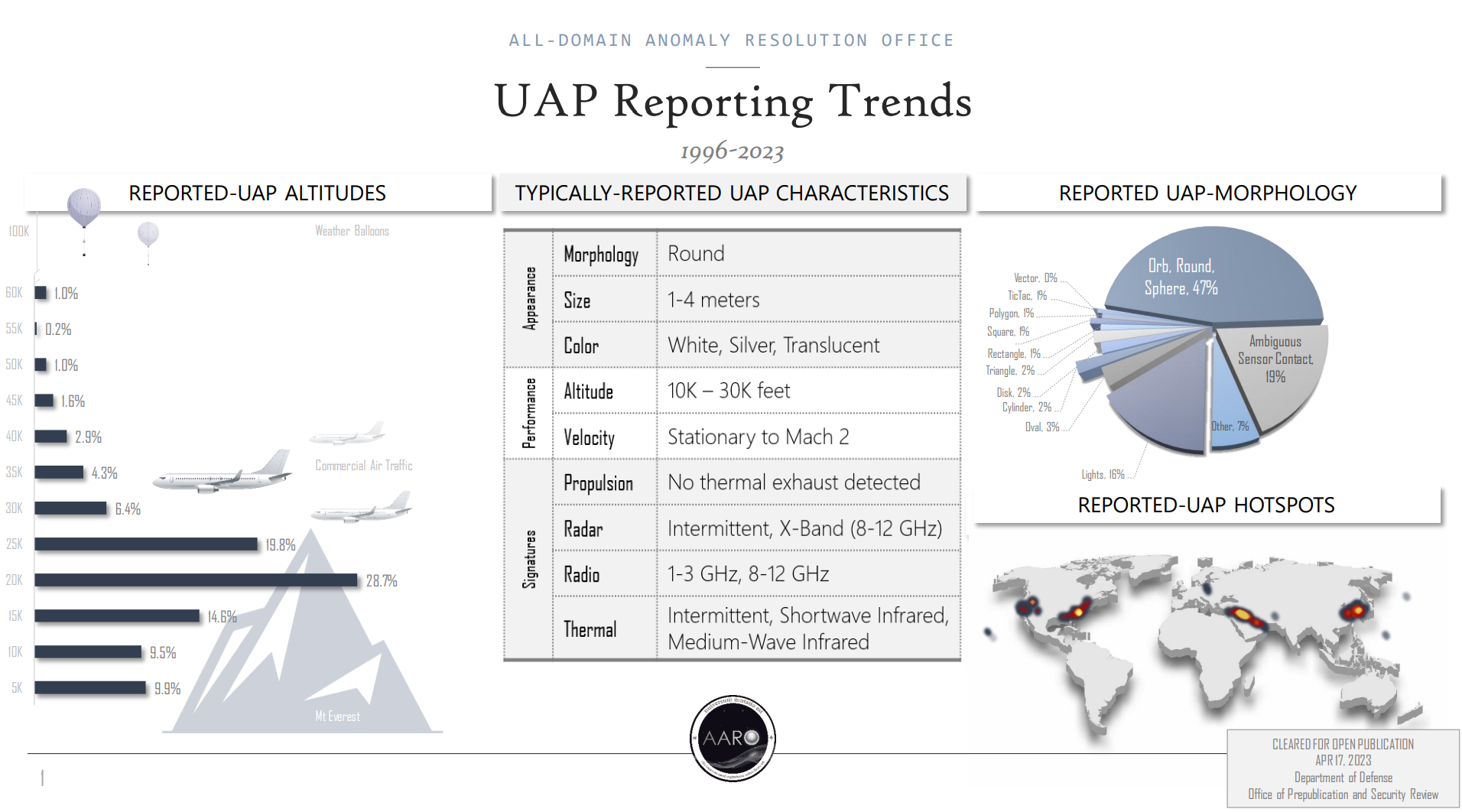
(Image credit: AARO/Wikimedia Commons)
The Pentagon’s official office for addressing UFOs has a new website where U.S. government and military personnel can report their own sightings.
The All-Domain Anomaly Resolution Office (AARO) unveiled the new website on Wednesday (Aug. 30). According to a note from the office’s director, Dr. Sean Kirkpatrick, the website will be used to inform the public about ARRO’s findings as well as offer a way for the public to report sightings of UFOs or, as they’re now called, unidentified anomalous phenomena (UAP).
While the site is still under construction, it features a section where the office will be “accepting reports from current or U.S. Government employees, service members, or contractors with direct knowledge of U.S. Government programs or activities related to UAP dating back to 1945.” These reports will help the office complete a historical record of such events, as requested by the United States Congress.
Related: UFO whistleblower tells Congress the US government is hiding evidence of ‘non-human intelligence’
The site also outlines the office’s mission, which it states is to “minimize technical and intelligence surprise by synchronizing scientific, intelligence, and operational detection identification, attribution, and mitigation of unidentified anomalous phenomena in the vicinity of national security areas.”
In addition, the site offers a three-part definition of UAP, which it states are objects in the air that can’t immediately be identified; objects or devices that travel between different domains such as air, space or water; and underwater objects that are not immediately identifiable or may be related to the first two definitions.
This focus on objects in space and in water is part of the reason the term “UFO” has fallen out of fashion and has been replaced with the more all-encompassing term “UAP.”
In a set of slides offering a more comprehensive overview of AARO’s mission, it is stated that the office will study “recovered enigmatic technologies, leveraging cross-sector partnerships and the latest developments in theoretical and applied physics, [and] engineering.”
In July 2023, a U.S. Air Force and intelligence community veteran told a Congressional subcommittee that the American government is hiding the existence of a “multi-decade UAP crash retrieval and reverse-engineering program.” No definitive proof of those claims have come to light, but several members of the U.S. Congress have vowed to get to the bottom of them.

AARO was established in July 2022 in order to “detect, identify and attribute objects of interest in, on or near military installations, operating areas, training areas, special use airspace and other areas of interest, and, as necessary, to mitigate any associated threats to safety of operations and national security,” according to a Department of Defense statement.
Despite collecting hundreds of reports from U.S. military and government personnel, Kirkpatrick stated at a public hearing in April that his office “has found no credible evidence thus far of extraterrestrial activity, off-world technology or objects that defy the known laws of physics.”
In a Frequently Asked Questions section on the new site, AARO states that it “uses a rigorous scientific framework and data-driven approach to better understand UAP” and will “follow the science wherever it leads.”
Join our Space Forums to keep talking space on the latest missions, night sky and more! And if you have a news tip, correction or comment, let us know at: community@space.com.
Note: This article have been indexed to our site. We do not claim legitimacy, ownership or copyright of any of the content above. To see the article at original source Click Here













